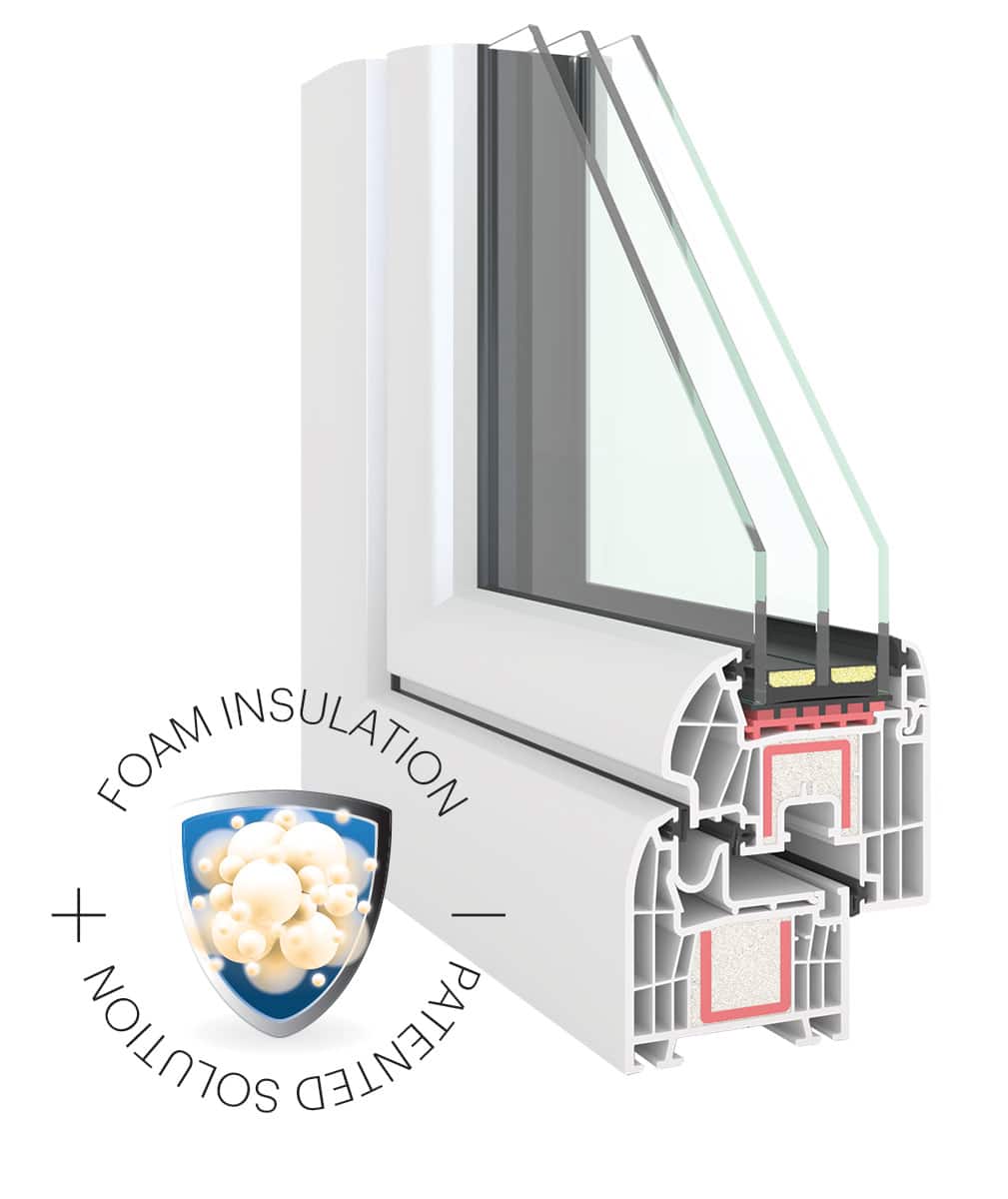Innovative technology ‘Foam Inside’
Energy efficiency
Energy efficiency is one of the key parameters when designing new buildings and renovating old ones. As you know, windows are one of the weakest points of the entire wall. Applying only appropriate glazing, which have a positive impact on the heat balance of the building, we will see that windows can often reduce the need for energy needed to heat the room. Window profiles are the weakest link in energy efficiency.
The direction in which the development of window systems has been indisputably for many years is to reduce the heat transfer coefficient of profiles. It is a pan-European trend, stimulated in many countries by appropriate regulations in this area, in others it is a result of strong competition. Many window companies try to bring more and more new solutions to the market, the effect of which is the emergence of messages about increasingly hot profiles. Of course, improving certain parameters is now possible thanks to the use of better components with higher properties
Innovative technology of filling profiles
Minimizing heat loss has become one of Ekoplast’s main goals. Many years of research, tests and improvements have been successful in the form of a significant reduction in the heat transfer coefficient of window profiles.
Based on preliminary work and research, the team decided to implement an innovative technology of filling the profiles with additional insulation material, a special polyurethane foam. The technology has been developed with the aim of creating PVC windows characterized by excellent thermal insulation values, reducing economic and environmental costs. The polyurethane foam allows the internal profiles to be filled with additional insulating material after the final sealing of frames or sashes. Properly applied foam cools and increases its volume, filling the window frame space to the corners, allowing significant improvement in the thermal properties of the windows up to 30%.

Thanks to the optimization of such factors as the filling time of 1mb profile, foam adhesion, temperature and composition of components, air pressure, the number and location of vent holes, or the place of foam application, we achieved an improvement of UW to 30%, depending on the size of the window.




